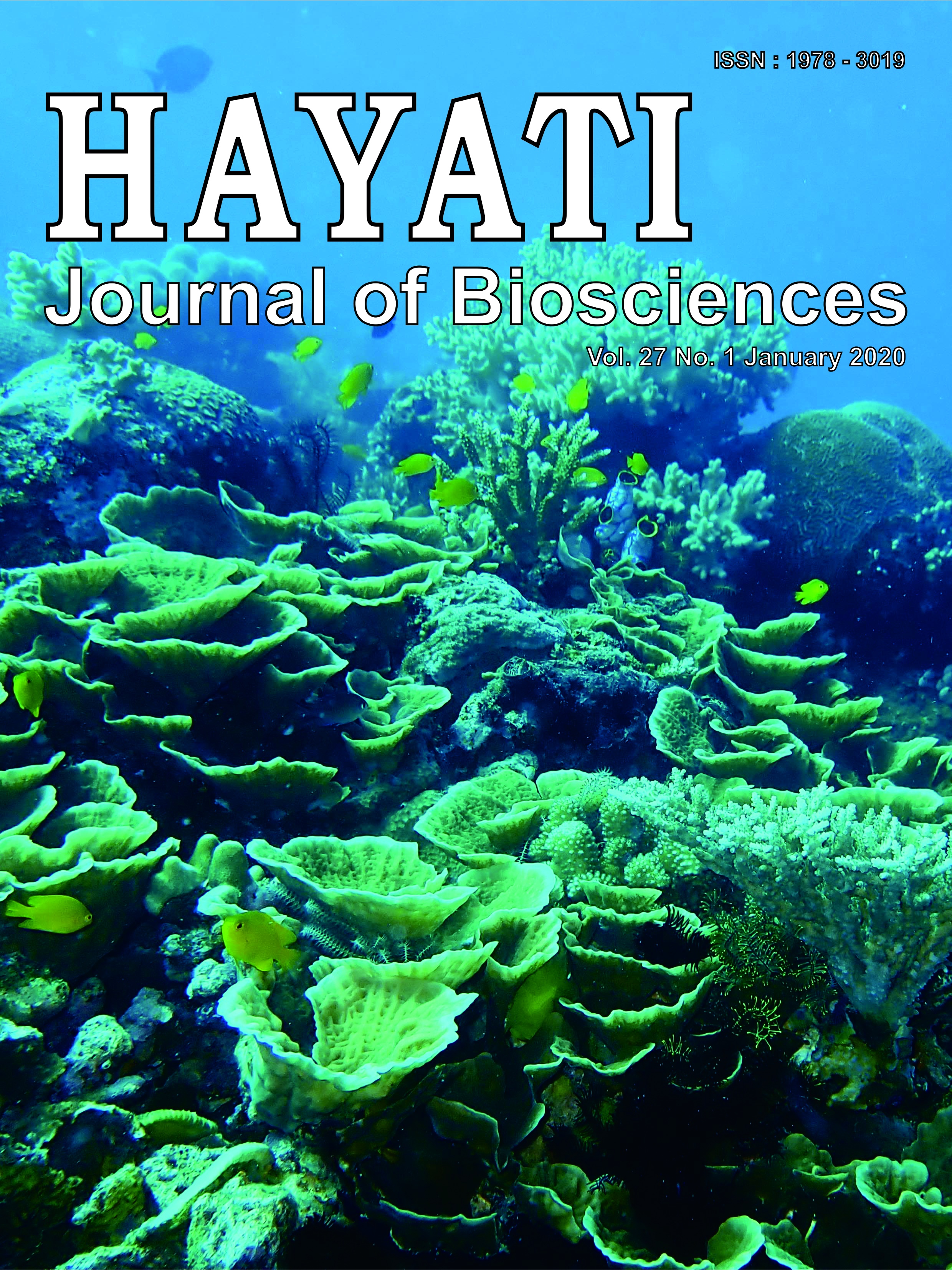Soil Moisture Mapping at Paddy Field in Indramayu Residence Using Landsat 8 OLI/TIRS
Abstract
Drought monitoring is important for the paddy planting planning. Remote sensing is one tool can be used for it. Paddy field monitoring based on the soil moisture gives much knowledge related to the water content in the soil. Soil moisture analysis in this study is using Normalized Different Water Index (NDWI), Linear Soil Moisture (LSM), and Tasseled Cap. Soil moisture change could explain based on calculation results of NDWI, Linear Soil Moisture (LSM), and Tasseled Cap Transformation (TCT). Based on the results has explained that the driest year occurs in 2015 and June 2016 has a higher soil moisture. Comparison with the radar shows that the results of soil moisture analysis with Landsat was effective can be used with results relatively close to the radar results.
Downloads
HAYATI J Biosci is an open access journal and the article's license is CC-BY-NC. This license lets others distribute, remix, tweak, and build upon author's work, as long as they credit the original creation. Authors retain copyright and grant the journal/publisher non exclusive publishing rights with the work simultaneously licensed under a https://creativecommons.org/
























.png) IPB University
IPB University Department of Biology
Department of Biology The Indonesian Biological Society
The Indonesian Biological Society 

